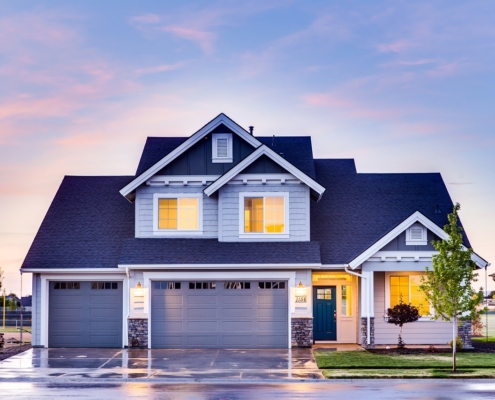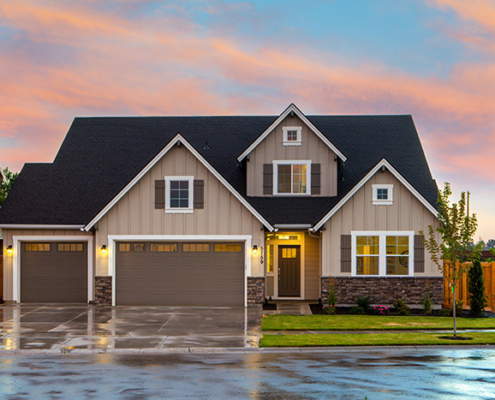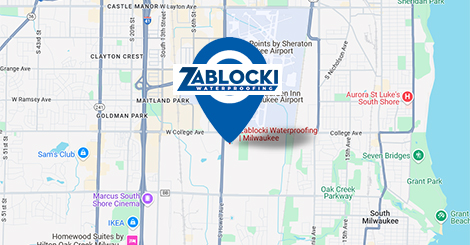 If you’ve ever asked yourself “What does drain tile do?” then you’re in for a treat! In this blog post, we will discuss everything you need to know about drain tile. What is drain tile? What does drain tile do? How is it installed? How does it work? Why is it such an important part of basement waterproofing? We’ll answer all of these questions and more.
If you’ve ever asked yourself “What does drain tile do?” then you’re in for a treat! In this blog post, we will discuss everything you need to know about drain tile. What is drain tile? What does drain tile do? How is it installed? How does it work? Why is it such an important part of basement waterproofing? We’ll answer all of these questions and more.
In this article, we’ll also be using the terms “drain tile” and “French drain” interchangeably, as they refer to the same type of drainage system. So let’s dive in and learn more about drain tile.
Article Summary:
- What is Drain Tile
- How is Drain Tile Installed?
- Why is Drain Tile Such an Important Part of Basement Waterproofing?
- Other Basement Waterproofing Methods
- Maintenance Tips for a Long-Lasting Drain Tile System
- Why Choose Zablocki Waterproofing for Your Drain Tile Needs?
- Frequently Asked Questions About Drain Tiles
1. What is Drain Tile?
Drain tile is a system of pipes that are installed around the perimeter of a basement foundation. The drain tile collects water and drains it away from the basement. This prevents basement flooding and helps to keep the basement dry.
There are two types of drain tile – interior and exterior. Interior drain tile is installed on the inside of the basement foundation wall and collects water that has seeped into the basement, moving it toward a sump crock which then pumps it out and away from the home. Exterior drain tile is installed in the ground on the outside of the basement foundation wall and collects water before it moves toward the basement. The water is then routed either out to the gutter, into the sewer system, or far away from the home.
As mentioned earlier, drain tiles can also be called French drains. They were commonly used in France during the 18th century to drain water from agricultural land, hence the name “French drain”.
Click here to learn more about drain tile.
2. How is Drain Tile Installed?
Exterior drain tile is installed by excavating around the outside perimeter of the basement foundation. The soil is removed and a bed of gravel is placed. The drain tile pipes are then laid in the gravel and covered with more gravel. This allows water to flow freely through the pipes and away from the basement.
Interior drain tile is installed by making a small hole in the basement floor and running the drain tile pipe around the perimeter of the basement. The pipe is then connected to a sump crock which pumps water out of the basement and away from the home.
3. Why is Drain Tile Such an Important Part of Basement Waterproofing?
Any moisture in your basement is bad news, but it’s usually inevitable unless you invest in basement waterproofing. At the more extreme end, basement flooding can cause serious damage to your home, including structural damage, mold growth, and health problems. It’s critical to do everything you can to prevent and mitigate basement moisture and direct water away from your home’s foundation.
Drain tile is such an important part of basement waterproofing because it prevents basement moisture and flooding. By installing drain tile, you can get ahead of serious foundation problems and keep your basement dry. While drain tile is not cheap, it can potentially save you tens of thousands of dollars in foundation repairs down the road.
4. Other Basement Waterproofing Methods
Drain tile works best at preventing basement moisture when it’s combined with other waterproofing best practices. These include:
- Grading your property: This means making sure that the ground slopes away from your home’s foundation. This prevents water from pooling around the foundation and helps to keep water away from your basement.
- Cleaning & fixing gutters and downspouts: This ensures that rainwater is directed away from your home’s foundation.
- Ventilating your basement: It’s important to run a dehumidifier at all times to keep your basement dry. You might also consider investing in a fan that runs constantly to keep the air moving.
- Reacting quickly to signs of basement moisture: Any moisture in your basement is a sign that it’s time to reevaluate your basement waterproofing strategy. Be sure to react quickly and address any issues before they become bigger problems.
- Investing in interior or exterior waterproofing: In addition to drain tile, there are other methods of basement waterproofing that can be used in combination with or separately from drain tile. These include sealants, exterior membranes, and interior drainage systems.
5. Maintenance Tips for a Long-Lasting Drain Tile System
- Regularly clean gutters and downspouts. Keeping these clear prevents debris from getting into your drain tile system.
- Inspect for damage or clogs. Check your drain tile system regularly for any signs of damage or clogs. Fixing these issues promptly can prevent future problems.
- Maintain proper grading. Over time, the soil around your home’s foundation may settle and cause improper grading. Be sure to check this and adjust as needed to ensure water is flowing away from your foundation.
6. Why Choose Zablocki Waterproofing for Your Drain Tile Needs?
Zablocki Waterproofing is the region’s leader in drain tile, basement waterproofing, and foundation repair. We have years of experience helping Milwaukee-area homeowners and building owners keep their basements dry. If you’re concerned about water in your basement, and searching for the best in Milwaukee basement waterproofing, give us a call today.
7. Frequently Asked Questions About Drain Tiles
Q: How do I know if my basement needs drain tile?
 A: Signs that your basement may need drain tile include water seepage, mold growth, musty odors, and cracks in the foundation.
A: Signs that your basement may need drain tile include water seepage, mold growth, musty odors, and cracks in the foundation.
Q: Can I install drain tile myself?
A: While DIY solutions may be cheaper upfront, they can often lead to problems down the road. It’s best to hire a professional waterproofing company like Zablocki Waterproofing for proper installation and long-lasting results.
Q: What is the lifespan of a drain tile system?
A: With proper maintenance, a well-installed drain tile system can last up to 30 years or more. Be sure to inspect and maintain your drain tile regularly for optimal performance.
Q: Can I have both interior and exterior drain tile?
A: Yes, it’s common for homes to have both interior and exterior drain tile systems in place. This provides added protection against basement moisture.





